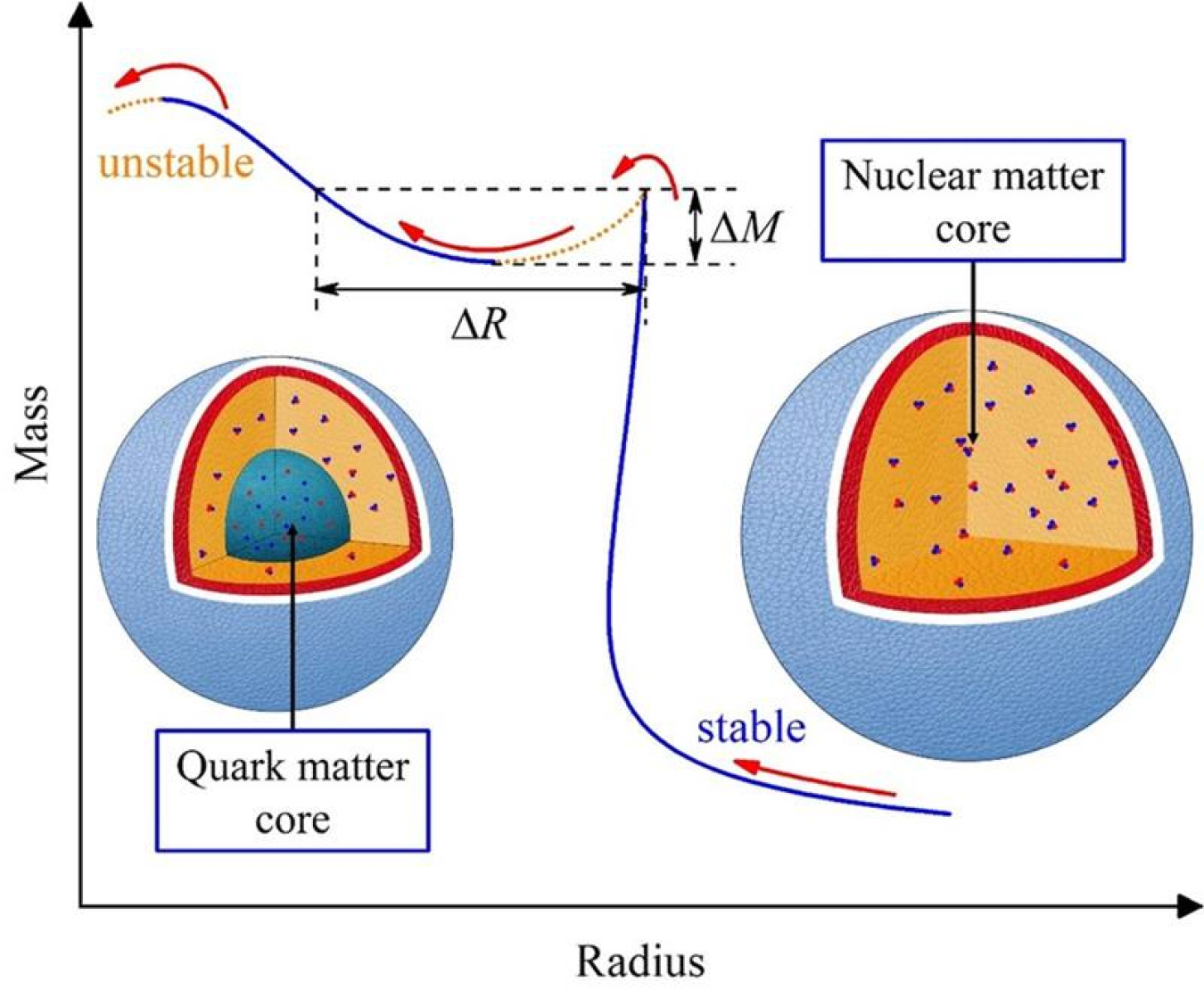Scientists have new insights into factors that determine how twin neutron stars—stars with the same mass but different sizes and compositions—can coexist.
July 23, 2025The Science
Neutron stars are the extremely dense remnants of old massive stars that have exploded in supernovae. They are small, with radii measuring only about 10 to 15 km (6 to 9 miles), but they can be twice as massive as our Sun. Two neutron stars may be born as twins or may evolve into twins with the same mass but different compositions and radii. How and why these twins exist, as well as their composition, depends on the poorly known equation of state (EOS) of the mysterious matter inside them. The EOS is an equation that links the pressure and energy density of superdense neutron-rich matter inside neutron stars. Answering the how and why questions about neutron stars accurately has been a shared goal of many astrophysical observations and nuclear laboratory experiments on Earth over the last few decades.
The Impact
This research identified key characteristics of nuclear EOS that determine both the mass range where the neutron star twins can coexist and the maximum difference in their radii. The findings from this work help explain how matter behaves under extreme gravity. This mystery has been puzzling researchers for decades. Understanding the science underlying the formation of twin neutron stars can help scientists interpret future high-precision X-ray and gravitational wave observations. It will also stimulate more experiments that probe the nuclear EOS using high-energy rare isotope beams in laboratories on Earth.
Summary
Researchers have long suspected the existence of twin neutron stars based on various model EOSs for both nuclear and quark matter. Using a meta-model (a template for developing models) that can mimic most available theoretical EOSs for neutron star matter, nuclear astrophysicists at East Texas A&M University and collaborators have identified key EOS characteristics for determining the properties of twin stars. They specifically found that the transition density from nuclear to quark matter and the density dependence of nuclear symmetry energy (the energy cost to make nuclear matter more neutron rich) are the most important factors for forming twin stars and determining their observational properties. These findings bring researchers closer to solving one of the biggest questions in nuclear astrophysics—how matter behaves at the densest extremes of the visible universe. The findings could also help scientists uncover new physics beyond what we currently know.
Contact
Bao-An Li
East Texas A&M University
Bao-An.Li@tamuc.edu
Funding
This research was funded in part by the Department of Energy Office of Science, Nuclear Physics program.
Publications
Nai-Bo, Zhang and Bao-An, Li, Impact of the nuclear equation of state on the formation of twin stars. European Physical Journal A 61, 31 (2025). [DOI: 10.1140/epja/s10050-025-01497-6]


